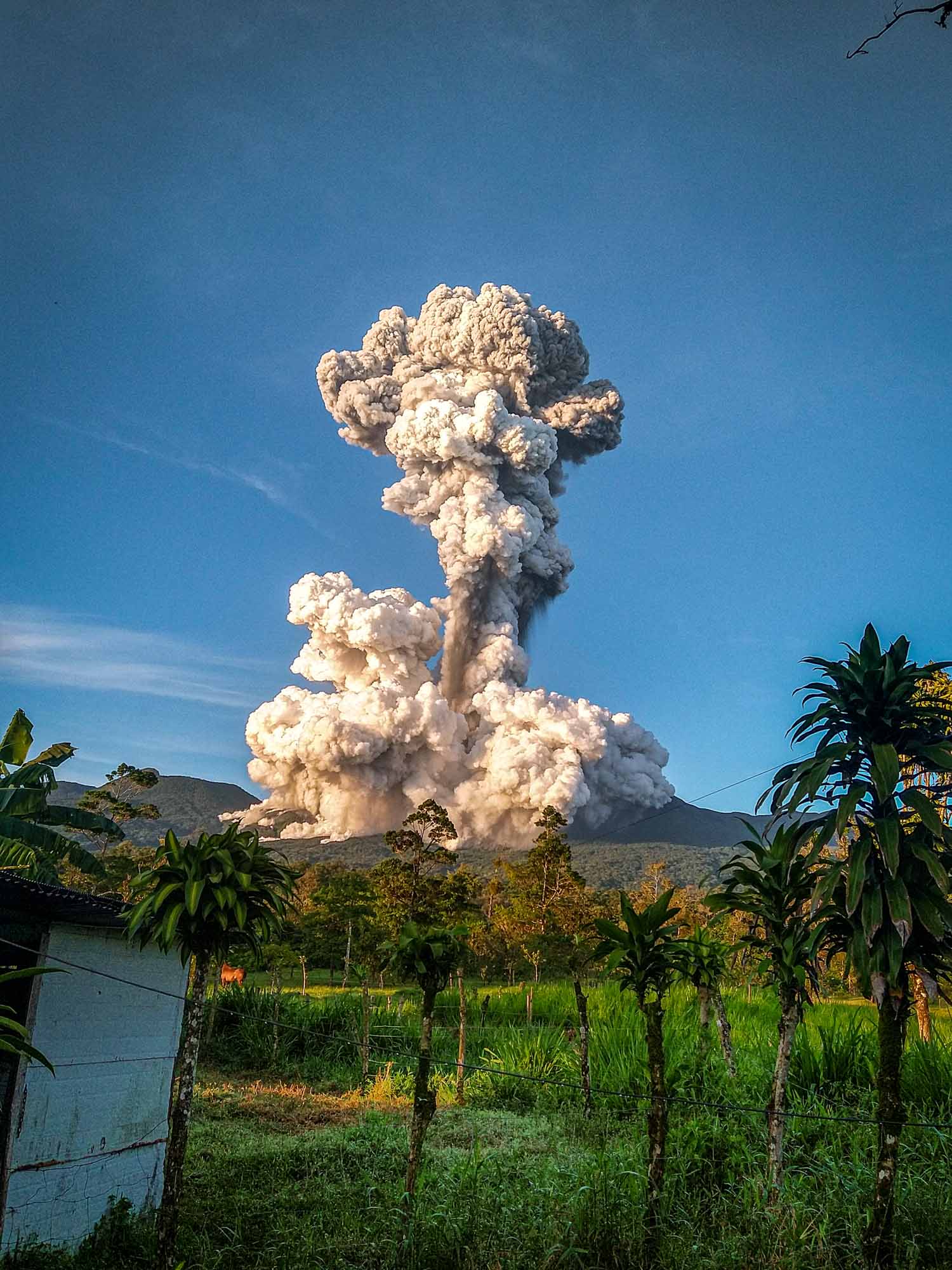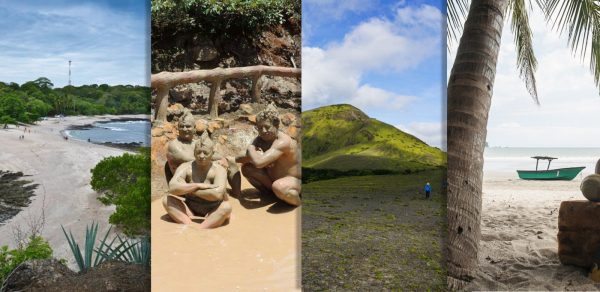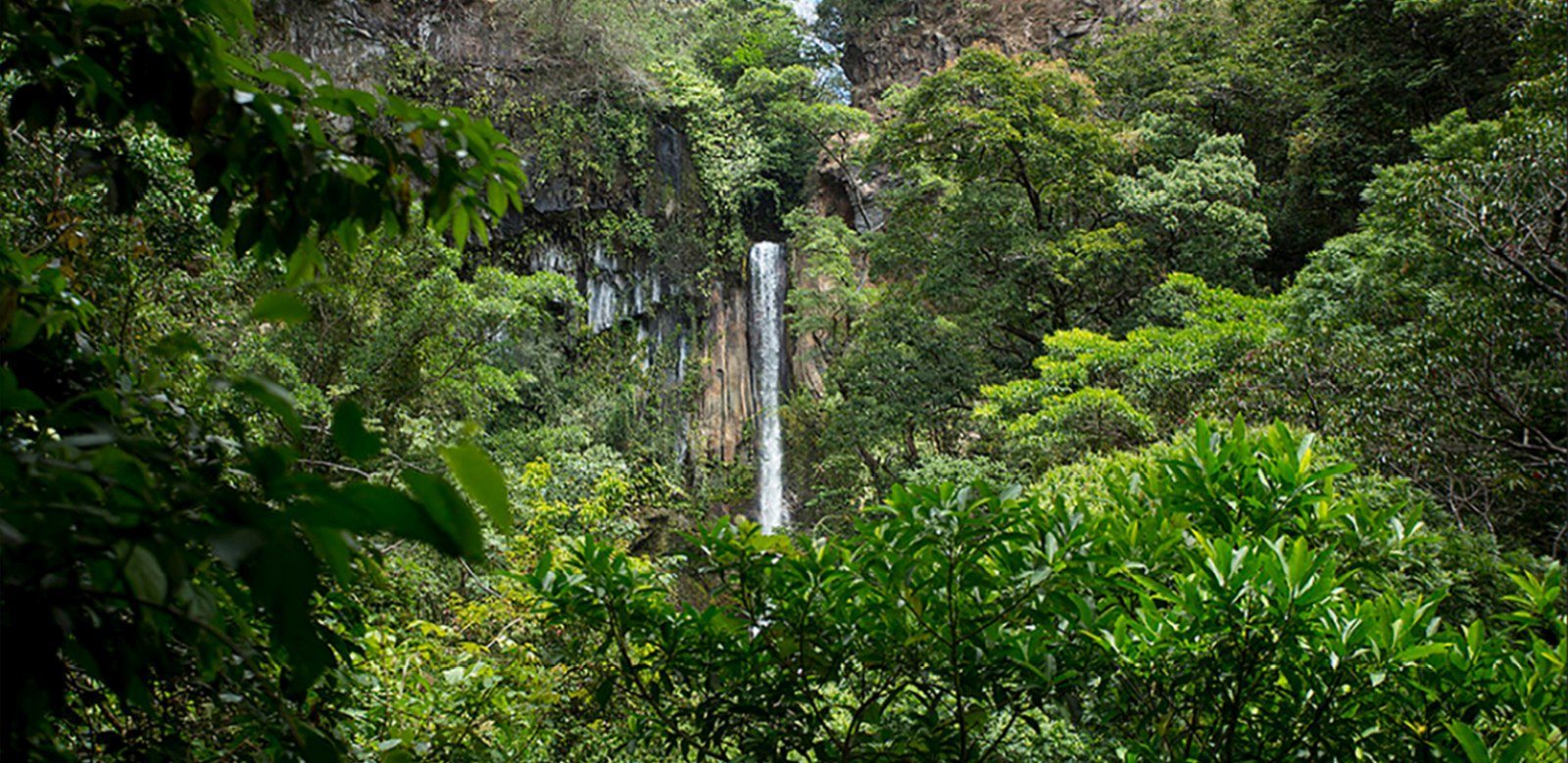
The eruption of Rincon de la Vieja volcano last Monday was the biggest one in the last 25 years. It ejected rocks of all sizes at speeds of up to 150 kilometers per hour (93 mph). Some of them were at temperatures of more than 200 degrees Celsius (392 degrees Fahrenheit).
If it had happened a day before, would we be mourning the loss of lives? Probably.
The director of protected areas for the Guanacaste Conservation Area (ACG- Área de Conservación Guanacaste), Marco Bustos, said that one of the goals of restoring and conserving ecosystems is to be able to show them to people through responsible and sustainable tourism.
However, for about 10 years, ACG authorities have noticed an increase in people going up to the volcanic cones by means of illegal trails.
Almost every weekend, we’re having this circumstance. Many people have been making money from the business of making illegal access ways to areas that may be at risk, mainly in volcanic activities,” Bustos indicated.
A quick search on Instagram for the hashtag #RincondelaVieja is more than enough to see many images of mountaineers posing in front of the volcano’s immense grayish crater.
Ver esta publicación en Instagram
Those who make these illegal access ways and those who go on them break the Forestry Law and, at the same time, put themselves at risk since these routes aren’t the ones prepared for visiting authorized sites in the national park.
A Costa Rican mountaineer whom we’ll call Luis shared his experience with The Voice of Guanacaste.
He said that he paid $100 to a person who organizes tours from San Jose. He and nine other people made the 3- to 4-hour hike to the top of the volcano on poorly monitored routes, some stretches along riverbeds that run straight down from the craters.
When they reached the top, they camped at Jilgueros Lagoon, located at the foot of Santa Maria volcano, very close to the active crater. The next morning, they went up to Rincon de la Vieja’s active crater to watch the sunrise.
The only way to see the volcano is at the edge of the crater. It’s not like there’s a viewpoint like at Poas. So on that side, it’s a bit complicated, but in order to see something as majestic as that crater, I’d go up again, of course,” affirmed Luis.
The ACG has made an effort to develop activities in conjunction with the Ministry of Public Security to keep visitors away from these sites. When they have to rescue someone, they have asked for support from the Red Cross, rescue workers from the National System of Conservation Areas (SINAC- Sistema Nacional de Áreas de Conservación) and the fire department.
Despite Monday’s eruption, these issues aren’t stopping.
On Tuesday, [the day after] the volcano had just erupted, we already had four visits that were monitored by our cameras, with all the details of the people who were going directly to the peak,” said Bustos.
Why is it so dangerous to climb up to the crater of Rincon de la Vieja?
Volcanologist Gino Gonzalez, a member of the NGO Volcanes sin Fronteras (Volcanos without Borders), stated that this is the most active volcano in Costa Rica and that its eruptions have increased since the Nicoya earthquake.
He added that eruptions of the country’s volcanoes are very difficult to predict since they have closed vents and also, when they do, they are extremely dangerous.
They have a large plug, in other words, so when the magma or gas reaches the surface, it’s making so much pressure that all of the plug bursts and the eruptions are very violent,” explained Gonzalez.
Among the dangers that people could be exposed to if they had been near the crater that day, the volcanologist listed large falling rocks, rock fragments that travel at a speed of 150 kilometers per hour (93 mph) at temperatures of more than 200 degrees Celsius (392 degrees Fahrenheit) and a high concentration of gases and particles that can cause asphyxiation.
According to Gonzalez, another factor that makes Rincon de la Vieja a dangerous volcano is the lake at its top. When there is an eruption, the lake overflows very easily and starts running down the slope. The levels in the riverbeds increase, carrying a lot of material from the eruption as well as what it sweeps away as it flows down.
If we’re swimming in the river, we have a few minutes to get out and get to a high place. What happens is that, instead of looking for higher ground, people go to the bridge to record videos,” he added.

On Monday, June 28, 2021 at 5:40 a.m., Rincon de la Vieja volcano erupted in a way that hadn’t occurred since 1996. Photo: Oscar Alvarado and Robert Araya
Gonzalez figures that there are three factors that make it very possible to die in a volcanic eruption. Exposure when going into a high-risk area like a crater, vulnerability when doing so without any kind of knowledge, and lastly, the volcanic threat.
“The volcano in itself is like that. We can’t change that. We can’t lower its intensity. What we can do is change the exposure and vulnerability numbers, but instead we increase them by illegally going to a volcano without any knowledge.”
Ascending to the volcano’s crater is only allowed by research teams. Before doing so, they evaluate seismic activity to decide whether or not to go up. If they go, they wear special protective gear like helmets, masks for acid gases, a long-sleeved shirt and pants and they take field equipment.
Is it safe to visit the national park and stay in the area?
Both Marco and Gino agree that the hotels near the volcano and the Las Pailas Sector of Rincon de la Vieja National Park are in a safe area since the volcanic activity is happening in a completely different location.
If anything, this may be an opportunity to see an active volcano that many people can take advantage of. There are many people in the world who travel to Costa Rica to see volcanoes,” Gonzalez affirmed.
In the Las Pailas Sector, visitors can see fumaroles, mud pots, hot springs and waterfalls from Tuesday to Sunday from 8 a.m. to 3 p.m.







Comments